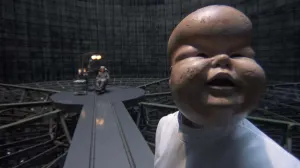The Webb Space Telescope is one of the busiest observatories in all of science. Since launching operations earlier this year, the space-faring telescope has returned one stellar photograph after the next, including snapshots of planets in nearby solar systems. Monday, researchers at Western University unveiled a series of images captured of the Orion constellation; namely, the photographs zero in on the Orion Bar, or the constellation’s “sword.”
Videos by ComicBook.com
Located just 1,350 light-years away from Earth, the Orion Nebula has long been a focal point of astronomers. Now, those at Western have been able to capture the clearest photos of the nebula yet.
“We are blown away by the breathtaking images of the Orion Nebula. We started this project in 2017, so we have been waiting more than five years to get these data,” Western astrophysicist Els Peeters said in a statement released by the university.
Peeters was joined by Olivier Berné and Emilie Habart, who used the Webb’s NIRCam (Near-Infrared Camera) to capture the photos.
“These new observations allow us to better understand how massive stars transform the gas and dust cloud in which they are born,” Peeters added. “Massive young stars emit large quantities of ultraviolet radiation directly into the native cloud that still surrounds them, and this changes the physical shape of the cloud as well as its chemical makeup. How precisely this works, and how it affects further star and planet formation is not yet well known.”
Nebulas are space-faring clouds where stars are born in the cosmic dust they’re made of. Using the pictures, researchers hope to obtain more data on how, exactly, stars are formed and “born.”
“We clearly see several dense filaments. These filamentary structures may promote a new generation of stars in the deeper regions of the cloud of dust and gas. Stellar systems already in formation show up as well,” added Berné. “Inside its cocoon, young stars with a disk of dust and gas in which planets form are observed in the nebula. Small cavities dug by new stars being blown by the intense radiation and stellar winds of newborn stars are also clearly visible.”








